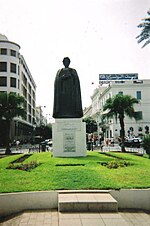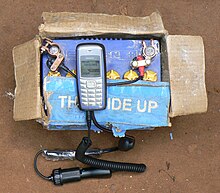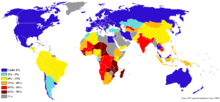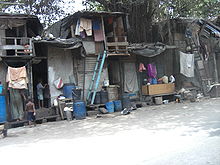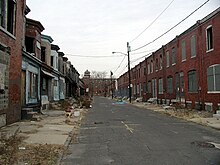From Wikipedia, the free encyclopedia
A business (company, enterprise or firm) is a legally recognized organization designed to provide goods or services, or both, to consumers, businesses and governmental entities. Businesses are predominant in capitalist economies. Most businesses are privately owned. A business is typically formed to earn profit that will increase the wealth of its owners and grow the business itself. The owners and operators of a business have as one of their main objectives the receipt or generation of a financial return in exchange for work and acceptance of risk. Notable exceptions include cooperative enterprises and state-owned enterprises. Businesses can also be formed not-for-profit or be state-owned.
The etymology of "business" relates to the state of being busy either as an individual or society as a whole, doing commercially viable and profitable work. The term "business" has at least three usages, depending on the scope — the singular usage (above) to mean a particular company or corporation, the generalized usage to refer to a particular market sector, such as "the music business" and compound forms such as agribusiness, or the broadest meaning to include all activity by the community of suppliers of goods and services. However, the exact definition of business, like much else in the philosophy of business, is a matter of debate and complexity of meanings.
Basic forms of ownership
Although forms of business ownership vary by jurisdiction, there are several common forms:
- Sole proprietorship: A sole proprietorship is a business owned by one person. The owner may operate on his or her own or may employ others. The owner of the business has personal liability of the debts incurred by the business.
- Partnership: A partnership is a form of business in which two or more people operate for the common goal which is often making profit. In most forms of partnerships, each partner has personal liability of the debts incurred by the business. There are three typical classifications of partnerships: general partnerships, limited partnerships, and limited liability partnerships.
- Corporation: A corporation is either a limited or unlimited liability entity that has a separate legal personality from its members. A corporation can be organized for-profit or not-for-profit. A corporation is owned by multiple shareholders and is overseen by a board of directors, which hires the business's managerial staff. In addition to privately owned corporate models, there are state-owned corporate models.
- Cooperative: Often referred to as a "co-op", a cooperative is a limited liability entity that can organize for-profit or not-for-profit. A cooperative differs from a corporation in that it has members, as opposed to shareholders, who share decision-making authority. Cooperatives are typically classified as either consumer cooperatives or worker cooperatives. Cooperatives are fundamental to the ideology of economic democracy.
For a country-by-country listing of legally recognized business forms, see Types of business entity.
Classifications

There are many types of businesses, and because of this, businesses are classified in many ways. One of the most common focuses on the primary profit-generating activities of a business:
- Agriculture and mining businesses are concerned with the production of raw material, such as plants or minerals.
- Financial businesses include banks and other companies that generate profit through investment and management of capital.
- Information businesses generate profits primarily from the resale of intellectual property and include movie studios, publishers and packaged software companies.
- Manufacturers produce products, from raw materials or component parts, which they then sell at a profit. Companies that make physical goods, such as cars or pipes, are considered manufacturers.
- Real estate businesses generate profit from the selling, renting, and development of properties, homes, and buildings.
- Retailers and Distributors act as middle-men in getting goods produced by manufacturers to the intended consumer, generating a profit as a result of providing sales or distribution services. Most consumer-oriented stores and catalogue companies are distributors or retailers. See also: Franchising
- Service businesses offer intangible goods or services and typically generate a profit by charging for labor or other services provided to government, other businesses, or consumers. Organizations ranging from house decorators to consulting firms, restaurants, and even entertainers are types of service businesses.
- Transportation businesses deliver goods and individuals from location to location, generating a profit on the transportation costs
- Utilities produce public services, such as heat, electricity, or sewage treatment, and are usually government chartered.
There are many other divisions and subdivisions of businesses. The authoritative list of business types for North America is generally considered to be the North American Industry Classification System, or NAICS. The equivalent European Union list is the NACE.
Management
The efficient and effective operation of a business, and study of this subject, is called management. The main branches of management are financial management, marketing management, human resource management, strategic management, production management, service management and information technology management.
Reforming State Enterprises
In recent decades, assets and enterprises that were run by various states have been modeled after business enterprises. In 2003, the People's Republic of China reformed 80% of its state-owned enterprises and modeled them on a company-type management system. Many state institutions and enterprises in China and Russia have been transformed into joint-stock companies, with part of their shares being listed on public stock markets.
Organizing
The major factors affecting how a business is organized are usually:

- The size and scope of the business, and its anticipated management and ownership. Generally a smaller business is more flexible, while larger businesses, or those with wider ownership or more formal structures, will usually tend to be organized as partnerships or (more commonly) corporations. In addition a business that wishes to raise money on a stock market or to be owned by a wide range of people will often be required to adopt a specific legal form to do so.
- The sector and country. Private profit making businesses are different from government owned bodies. In some countries, certain businesses are legally obliged to be organized in certain ways.
- Limited liability. Corporations, limited liability partnerships, and other specific types of business organizations protect their owners or shareholders from business failure by doing business under a separate legal entity with certain legal protections. In contrast, unincorporated businesses or persons working on their own are usually not so protected.
- Tax advantages. Different structures are treated differently in tax law, and may have advantages for this reason.
- Disclosure and compliance requirements. Different business structures may be required to make more or less information public (or reported to relevant authorities), and may be bound to comply with different rules and regulations.
Many businesses are operated through a separate entity such as a corporation or a partnership (either formed with or without limited liability). Most legal jurisdictions allow people to organize such an entity by filing certain charter documents with the relevant Secretary of State or equivalent and complying with certain other ongoing obligations. The relationships and legal rights of shareholders, limited partners, or members are governed partly by the charter documents and partly by the law of the jurisdiction where the entity is organized. Generally speaking, shareholders in a corporation, limited partners in a limited partnership, and members in a limited liability company are shielded from personal liability for the debts and obligations of the entity, which is legally treated as a separate "person." This means that unless there is misconduct, the owner's own possessions are strongly protected in law, if the business does not succeed.
Where two or more individuals own a business together but have failed to organize a more specialized form of vehicle, they will be treated as a general partnership. The terms of a partnership are partly governed by a partnership agreement if one is created, and partly by the law of the jurisdiction where the partnership is located. No paperwork or filing is necessary to create a partnership, and without an agreement, the relationships and legal rights of the partners will be entirely governed by the law of the jurisdiction where the partnership is located.
A single person who owns and runs a business is commonly known as a sole proprietor, whether he or she owns it directly or through a formally organized entity.
A few relevant factors to consider in deciding how to operate a business include:
- General partners in a partnership (other than a limited liability partnership), plus anyone who personally owns and operates a business without creating a separate legal entity, are personally liable for the debts and obligations of the business.
- Generally, corporations are required to pay tax just like "real" people. In some tax systems, this can give rise to so-called double taxation, because first the corporation pays tax on the profit, and then when the corporation distributes its profits to its owners, individuals have to include dividends in their income when they complete their personal tax returns, at which point a second layer of income tax is imposed.
- In most countries, there are laws which treat small corporations differently than large ones. They may be exempt from certain legal filing requirements or labor laws, have simplified procedures in specialized areas, and have simplified, advantageous, or slightly different tax treatment.
- To "go public" (sometimes called IPO) -- which basically means to allow a part of the business to be owned by a wider range of investors or the public in general—you must organize a separate entity, which is usually required to comply with a tighter set of laws and procedures. Most public entities are corporations that have sold shares, but increasingly there are also public LLCs that sell units (sometimes also called shares), and other more exotic entities as well (for example, REITs in the USA, Unit Trusts in the UK). However, you cannot take a general partnership "public."
Commercial law
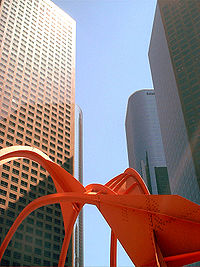
Most commercial transactions are governed by a very detailed and well-established body of rules that have evolved over a very long period of time, it being the case that governing trade and commerce was a strong driving force in the creation of law and courts in Western civilization.
As for other laws that regulate or impact businesses, in many countries it is all but impossible to chronicle them all in a single reference source. There are laws governing treatment of labor and generally relations with employees, safety and protection issues (Health and Safety), anti-discrimination laws (age, gender, disabilities, race, and in some jurisdictions, sexual orientation), minimum wage laws, union laws, workers compensation laws, and annual vacation or working hours time.
In some specialized businesses, there may also be licenses required, either due to special laws that govern entry into certain trades, occupations or professions, which may require special education, or by local governments. Professions that require special licenses range from law and medicine to flying airplanes to selling liquor to radio broadcasting to selling investment securities to selling used cars to roofing. Local jurisdictions may also require special licenses and taxes just to operate a business without regard to the type of business involved.
Some businesses are subject to ongoing special regulation. These industries include, for example, public utilities, investment securities, banking, insurance, broadcasting, aviation, and health care providers. Environmental regulations are also very complex and can impact many kinds of businesses in unexpected ways.
Capital

When businesses need to raise money (called 'capital'), more laws come into play. A highly complex set of laws and regulations govern the offer and sale of investment securities (the means of raising money) in most Western countries. These regulations can require disclosure of a lot of specific financial and other information about the business and give buyers certain remedies. Because "securities" is a very broad term, most investment transactions will be potentially subject to these laws, unless a special exemption is available.
Capital may be raised through private means, by public offer (IPO) on a stock exchange, or in many other ways. Major stock exchanges include the Shanghai Stock Exchange, Singapore Exchange, Hong Kong Stock Exchange, New York Stock Exchange and Nasdaq (USA), the London Stock Exchange (UK), the Tokyo Stock Exchange (Japan), and so on. Most countries with capital markets have at least one.
Business that have gone "public" are subject to extremely detailed and complicated regulation about their internal governance (such as how executive officers' compensation is determined) and when and how information is disclosed to the public and their shareholders. In the United States, these regulations are primarily implemented and enforced by the United States Securities and Exchange Commission (SEC). Other Western nations have comparable regulatory bodies. The regulations are implemented and enforced by the China Securities Regulation Commission (CSRC), in China. In Singapore, the regulation authority is Monetary Authority of Singapore (MAS), and in Hong Kong, it is Securities and Futures Commission (SFC).
As noted at the beginning, it is impossible to enumerate all of the types of laws and regulations that impact on business today. In fact, these laws have become so numerous and complex, that no business lawyer can learn them all, forcing increasing specialization among corporate attorneys. It is not unheard of for teams of 5 to 10 attorneys to be required to handle certain kinds of corporate transactions, due to the sprawling nature of modern regulation. Commercial law spans general corporate law, employment and labor law, healthcare law, securities law, M&A law (who specialize in acquisitions), tax law, ERISA law (ERISA in the United States governs employee benefit plans), food and drug regulatory law, intellectual property law (specializing in copyrights, patents, trademarks and such), telecommunications law, and more.
In Thailand, for example, it is necessary to register a particular amount of capital for each employee, and pay a fee to the government for the amount of capital registered. There is no legal requirement to prove that this capital actually exists, the only requirement is to pay the fee. Overall, processes like this are detrimental to the development and GDP of a country, but often exist in "feudal" developing countries.
Intellectual property
Businesses often have important "intellectual property" that needs protection from competitors for the company to stay profitable. This could require patents or copyrights or preservation of trade secrets. Most businesses have names, logos and similar branding techniques that could benefit from trademarking. Patents and copyrights in the United States are largely governed by federal law, while trade secrets and trademarking are mostly a matter of state law. Because of the nature of intellectual property, a business needs protection in every jurisdiction in which they are concerned about competitors. Many countries are signatories to international treaties concerning intellectual property, and thus companies registered in these countries are subject to national laws bound by these treaties.

